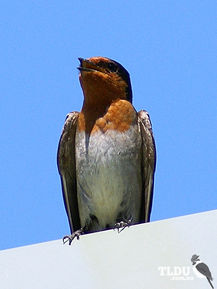
Shoppers Feedback:
Jan 17, 2017
Hello Ros,
I have now paid the invoice, but I would like to write to you just to say a big THANK YOU for getting me the Penguin!
The ChatterMate Penguin became a nice memory for me when I was in New Zealand, and I am so greatful to you for arranging so that I could have it! :-)
Thank you so much!!!!!!!!!!!
Regards,
Malin
Hi Ros,
Many thanks for your very kind email. I really appreciate your prompt reply!
I appreciate your advice regarding the decorations and customs. These are a gift for my daughter’s exchange student family so when she returns home on the weekend I will show her and see if she loves them as much as I do!
Thanks so very much again - I am truly grateful for your kind assistance.
Kind Regards
Bernadette
Ros,
Thanks again for the great customer service. It's a refreshing change!
Best regards,
Trevor
Hey Roz,
Thank you for your emails. Just loved my first order. The cute little Aussie bush critters are going to be used for an office Christmas decoration. My colleagues also liked them and talked about making an order to your site. I'll send you a photo when completed.
I'll be ordering more to send to my daughter's host family in America.
Fabulous service from you.
Kind regards,
Michelle
Thankyou. Order arrived today. One very happy grandson with his new beastly binoculars.
Regards,
Irene
- Home
- Wild Wonders
- Shop
- Aromas of Australia
- Australian Made
- Books
- Book Marks
- Christmas Decoration Sale
- Christmas Decorations
- Clocks
- Drink Holders
- Garden & Outdoor
- Gift Wrapping & Cards
- Home & Giftware
- Jewellery
- Keyrings
- New Products
- Pencils & Pen Holders
- Photo Frames
- Plush Toys
- Plush with Sound
- Sheepskin Rugs
- Stationery
- Stone Carvings
- Toys & Games
- Travel Goods
- Wedding
- Wild Figurines
- Wildlife Safety Products
- Wind Chimes
- Wine Charms
- View All Products
- Wildlife
- Australiana
- Explore
- Contact Us
Welcome Swallow

Quick Facts
| Length: | 15 cm |
| Height: | - |
| Weight: | 15 grams |
| Colour: | Metallic blue-black above, light grey below on the breast and belly. Rust on the forehead, throat an |
| Habitat: | Wide variety of habitats with the exception of the more heavily forested regions and drier inland ar |
| Food: | Variety of insects caught on the wing |
| Predators: | - |
| Status: | Secure in all states and territories in Australia |
The Welcome Swallow is metallic blue-black above, light grey below on the breast and belly, and rust on the forehead, throat and upper breast. It has a long forked tail, with a row of white spots on the individual feathers. The outer tail feathers (streamers) are slightly shorter in the female. Young Welcome Swallows are buffy white, instead of rusty, on the forehead and throat, and have shorter tail streamers.
The Barn Swallow is an uncommon visitor to parts of northern Australia. It can be distinguished from the Welcome Swallow by its black breast band and white underparts. Other swallow species include the White-backed Swallow, which has a white back and grey white head, and the Red-rumped Swallow, which is a rare visitor to Australia's north and has a red rump and streaked, chestnut underparts. Swallows are also confused with the martins, of which there are two species in Australia: the Fairy Martin and the Tree Martin. Both species have shorter, more square tails, and white to buff rumps.
Swifts are similar in habits and appearance to the swallows, but have longer and more curved wings and differences in their flight. Swifts are rarely seen landing, while swallows are a common sight on wires, posts and other suitable perches.
Welcome Swallows are widespread in Australia, but are less common in the far north than in the south.
Welcome Swallows visit a wide variety of habitats with the exception of the more heavily forested regions and drier inland areas.
Welcome Swallows are partially migratory, moving around in response to food availability.
Welcome Swallows feed on a wide variety on insects. They catch prey in flight, using their acrobatic flying skills. The prey is guided into the bird's wide, open mouth with the help of short rictal bristles bordering the bill. These bristles also help protect the bird's eye. Where insects are in large supply, Welcome Swallows feed in large flocks.
Welcome Swallows readily breed close to human habitation. The nest is an open cup of mud and grass, made by both sexes, and is attached to a suitable structure, such as a vertical rock wall or building. The nest is lined with feathers and fur. The female alone incubates the eggs but the young are fed by both parents. Often two broods are raised in a season.
Last Updated: Thursday 9th January, 2014
BirdLife Australia - www.birdlife.org.au
BUSH e-TELEGRAPH
Signup for our monthly newsletter the "e-Telegraph"
Quick Links
Home | The Beginning | About The Land Down Under | Wild Wonders | Advertise on Wild Wonders | Christmas Decoration Sale | Christmas Tree Decorations | Drink Holders | Plush with Sound | Stone Carvings | Wildlife Wine Charms | Freebies | Australian Wildlife | Help Our Wildlife | Australiana | Photo of the Month | Explore The Land Down Under | Contact Us | Legal Notices

